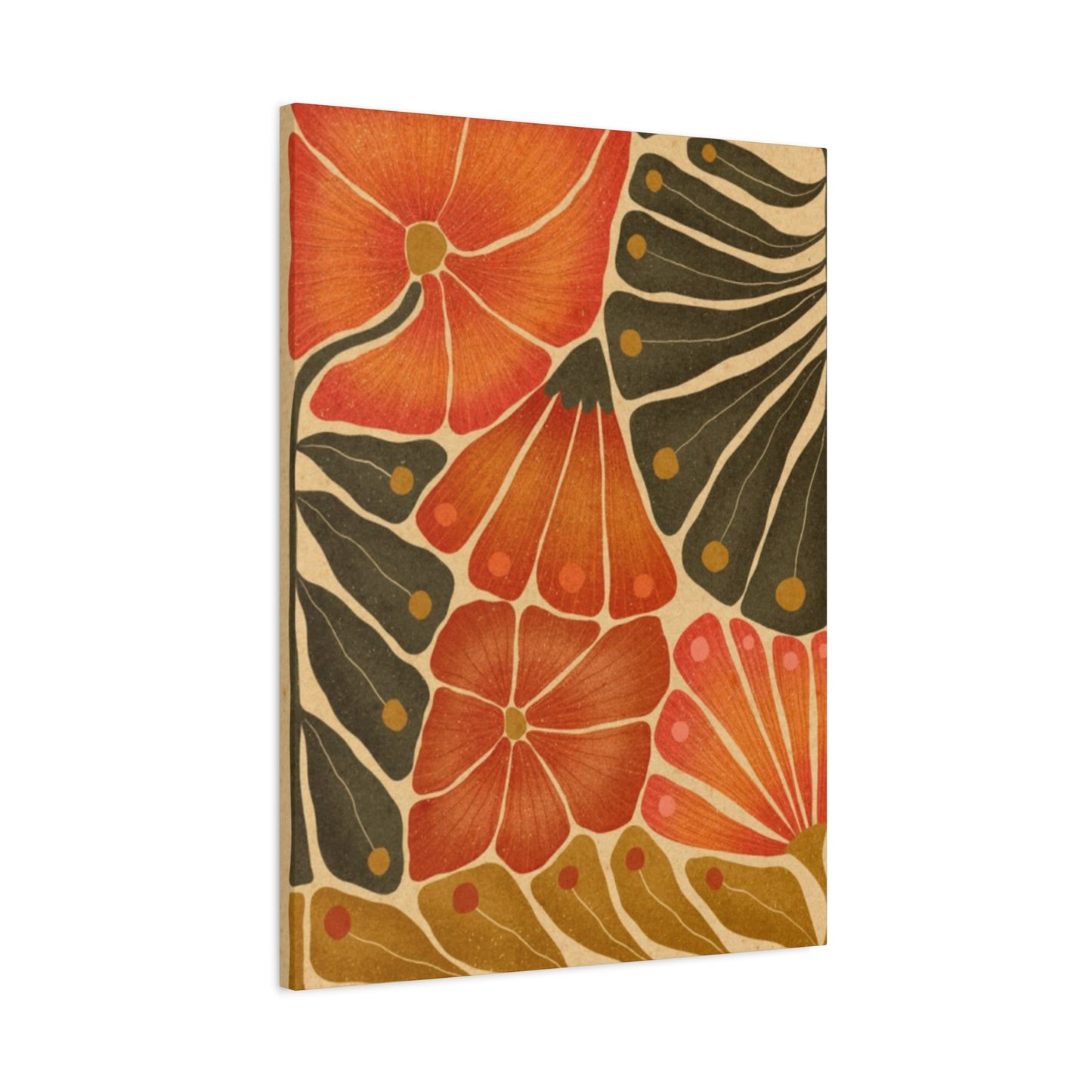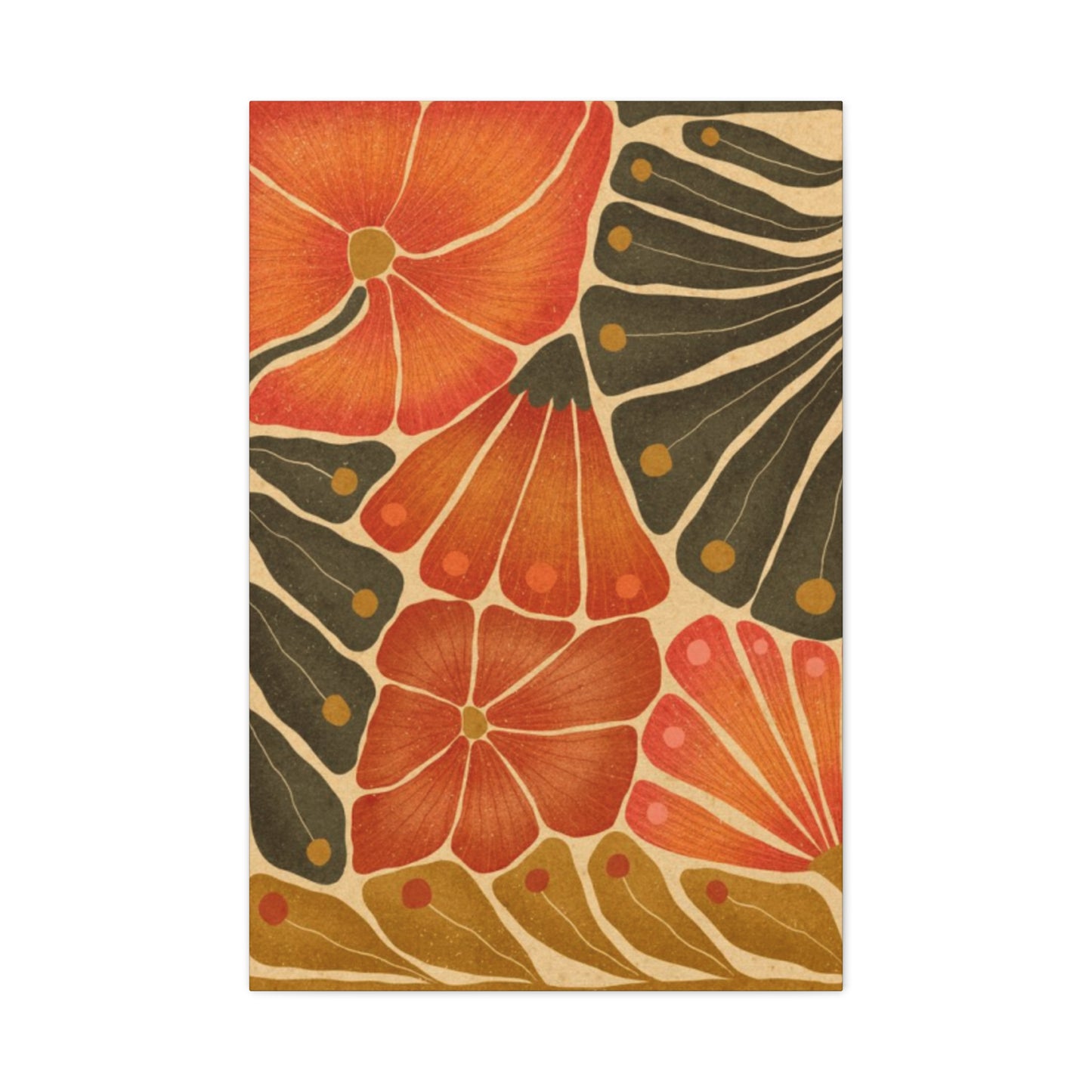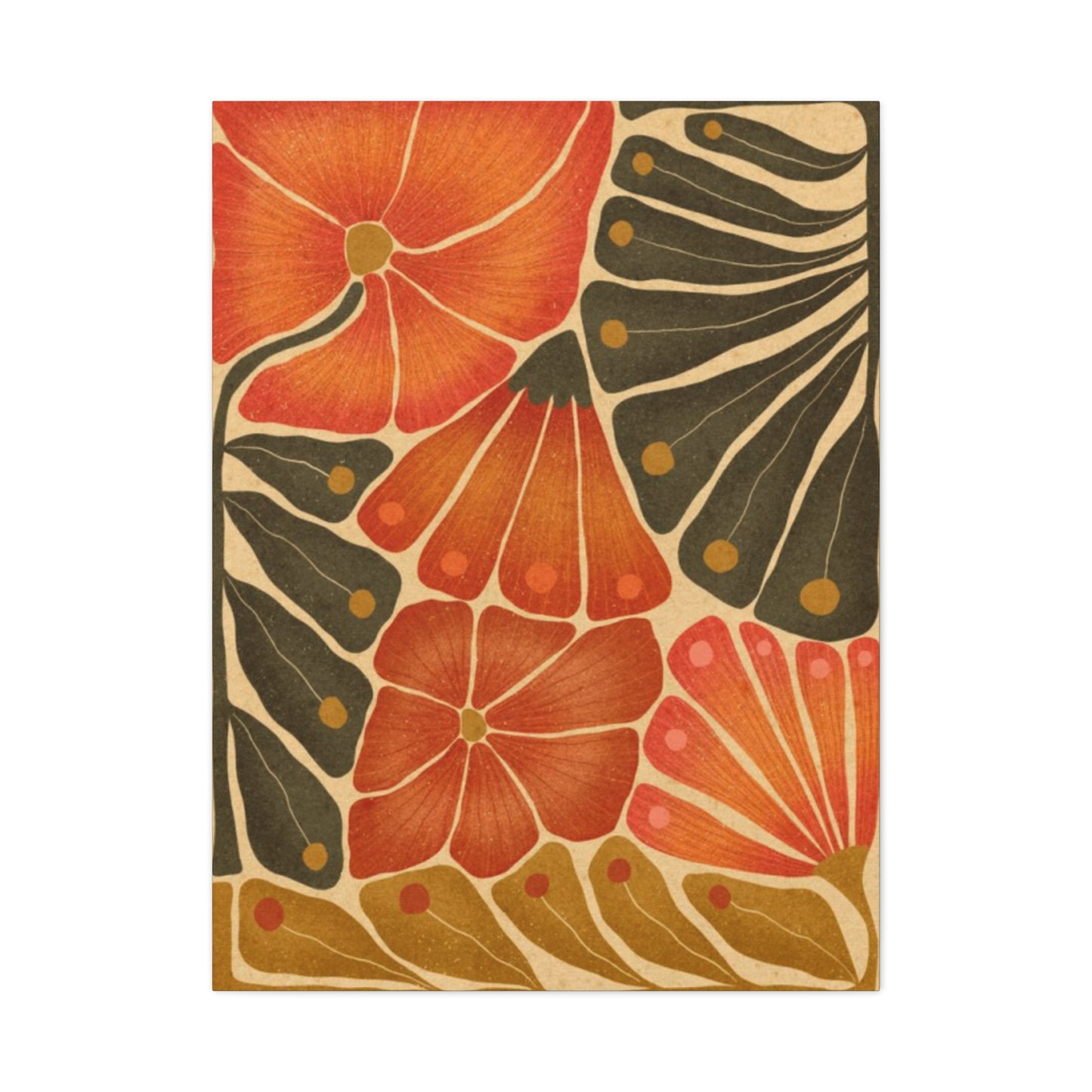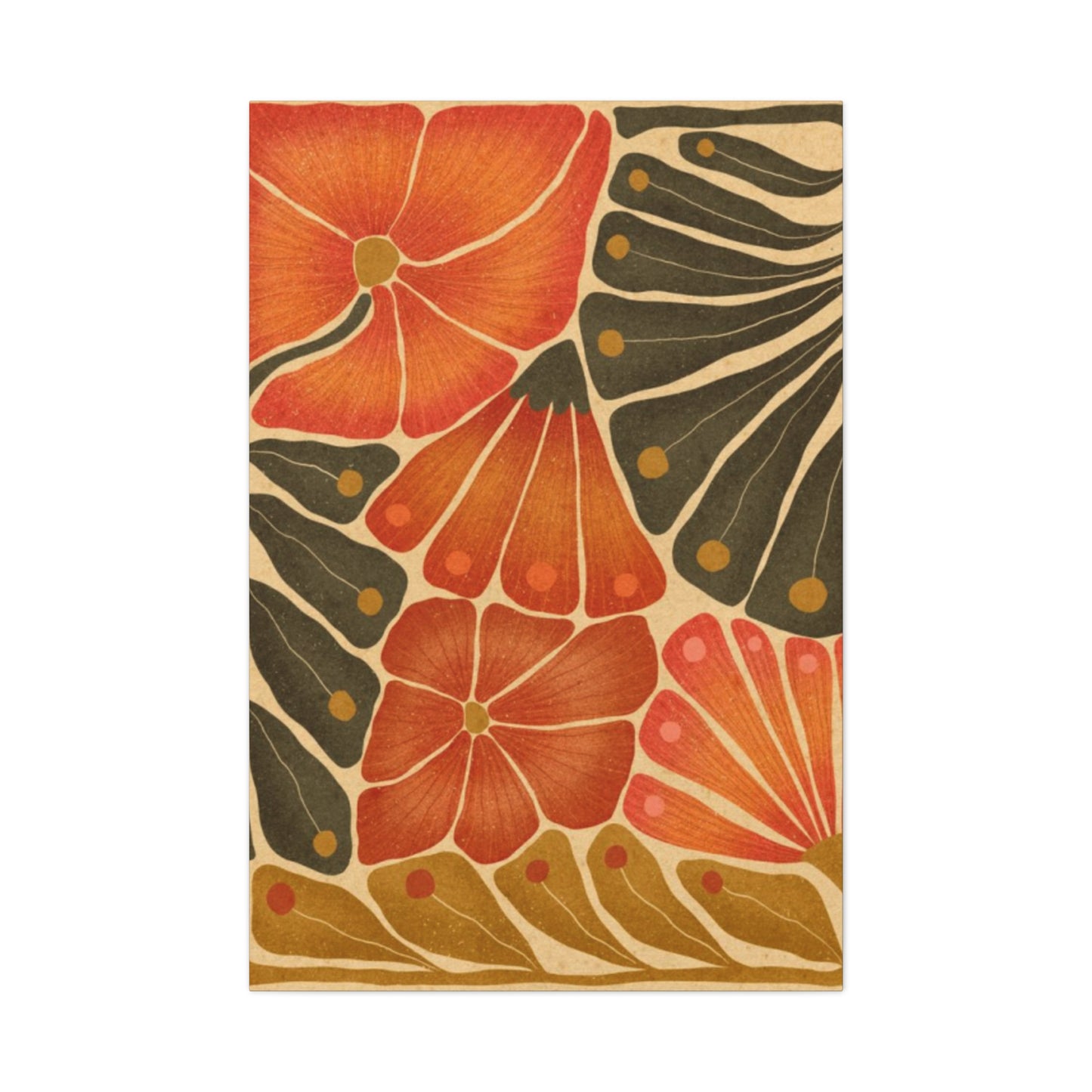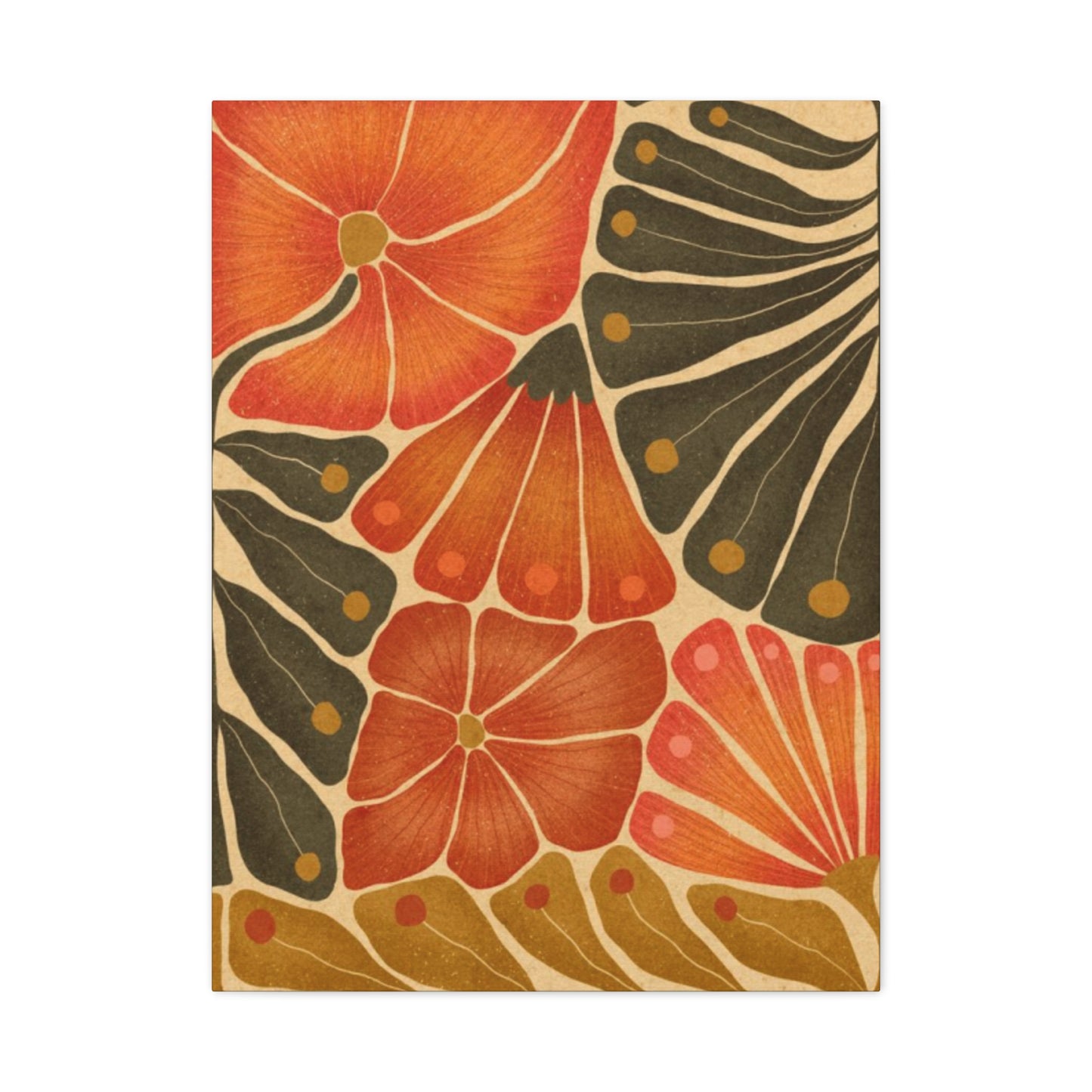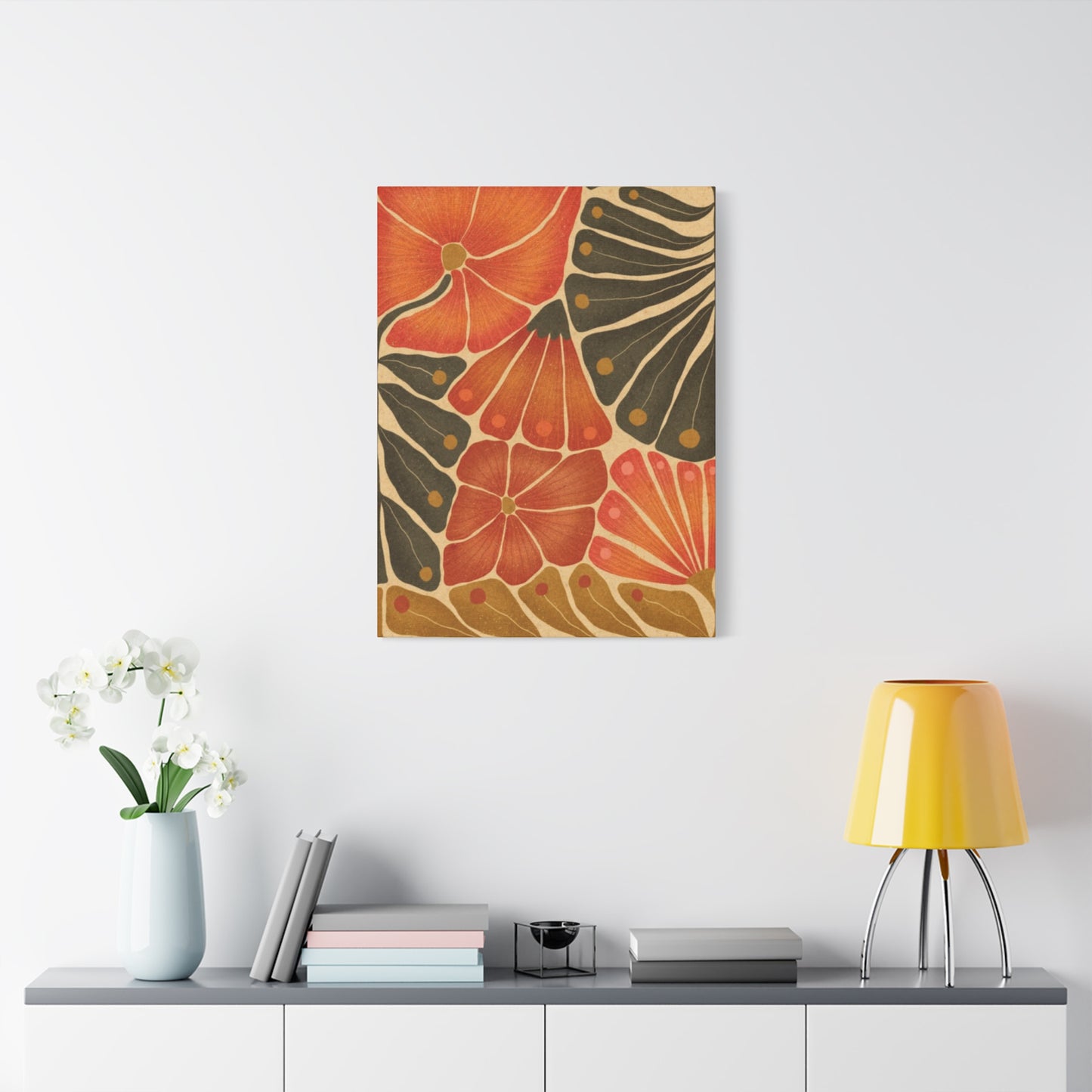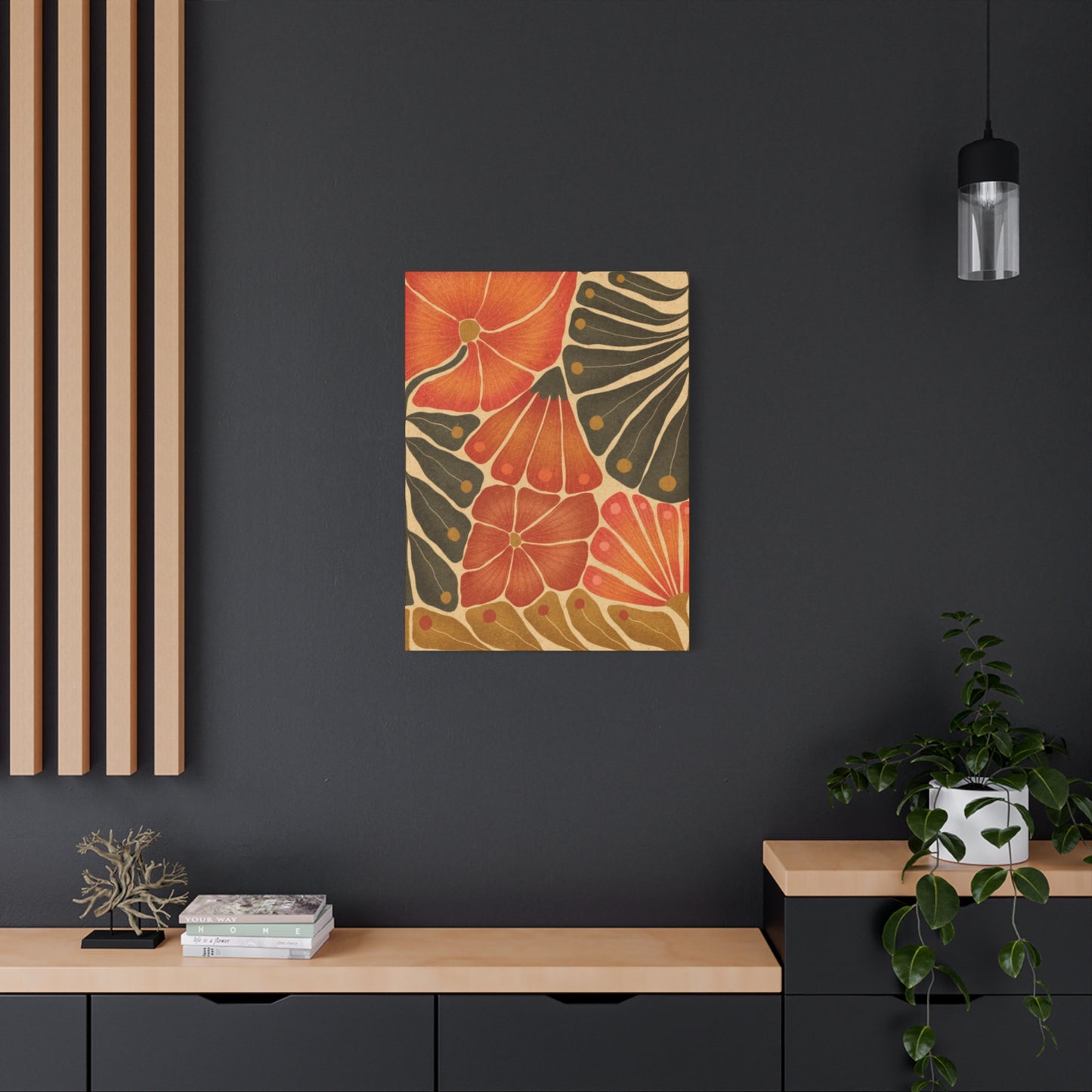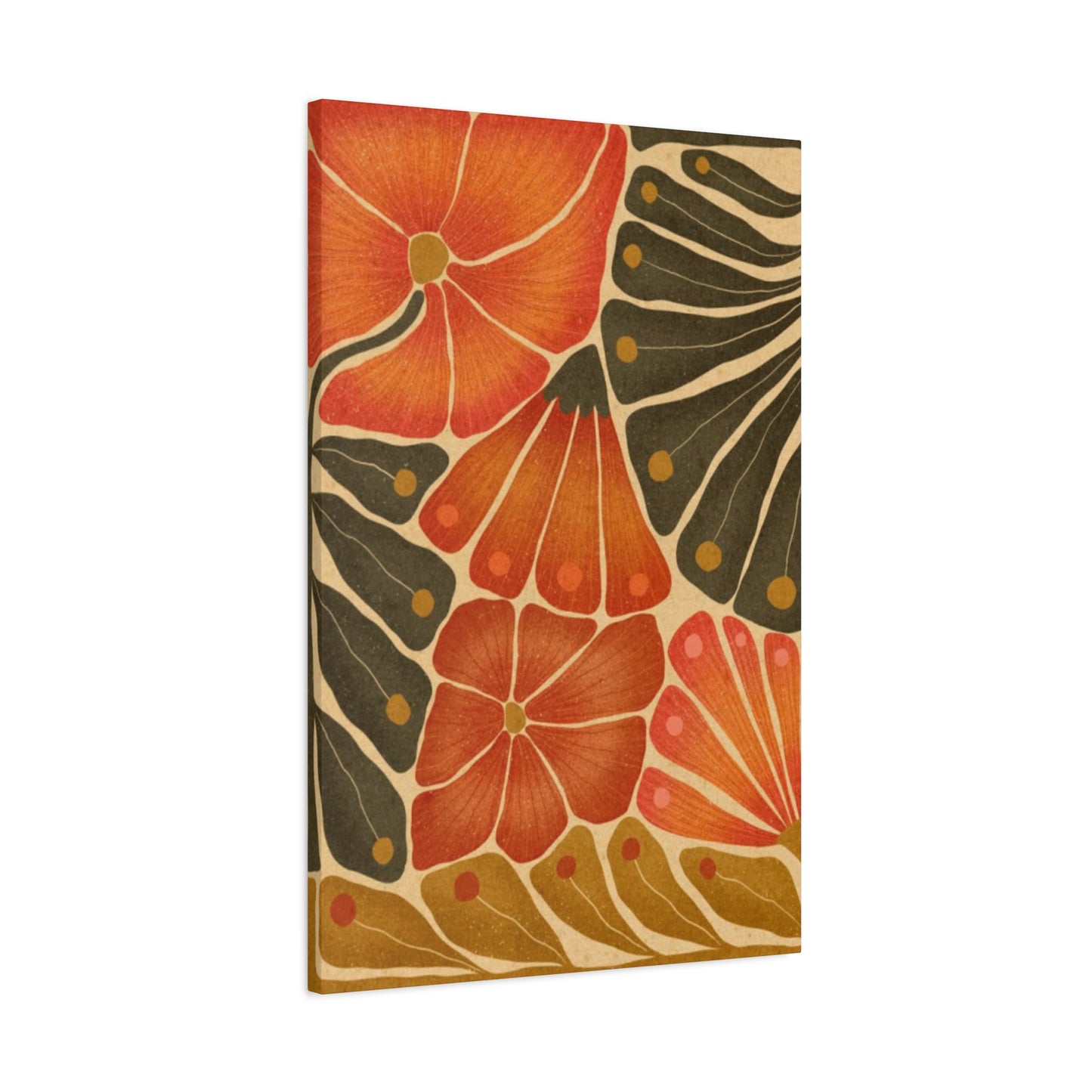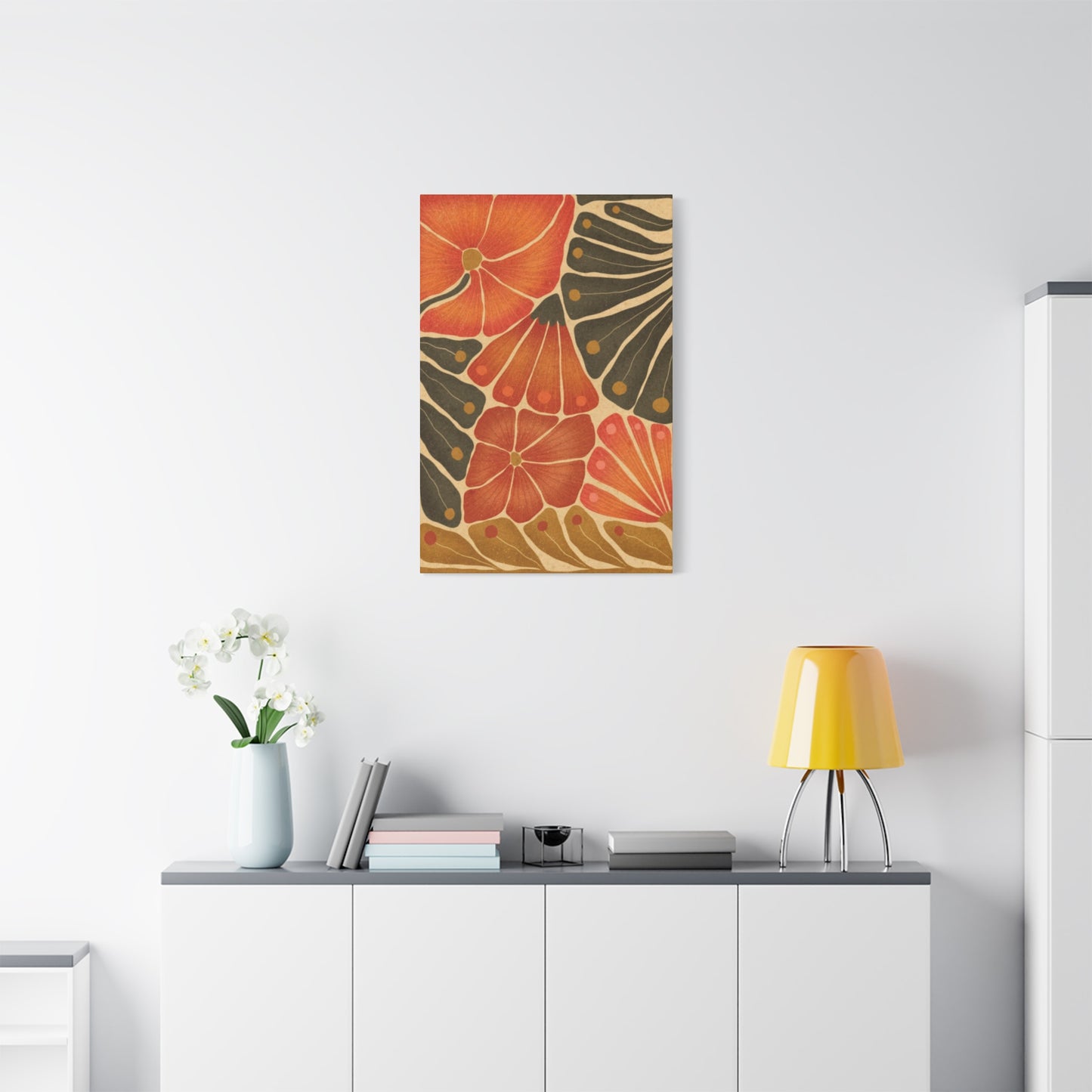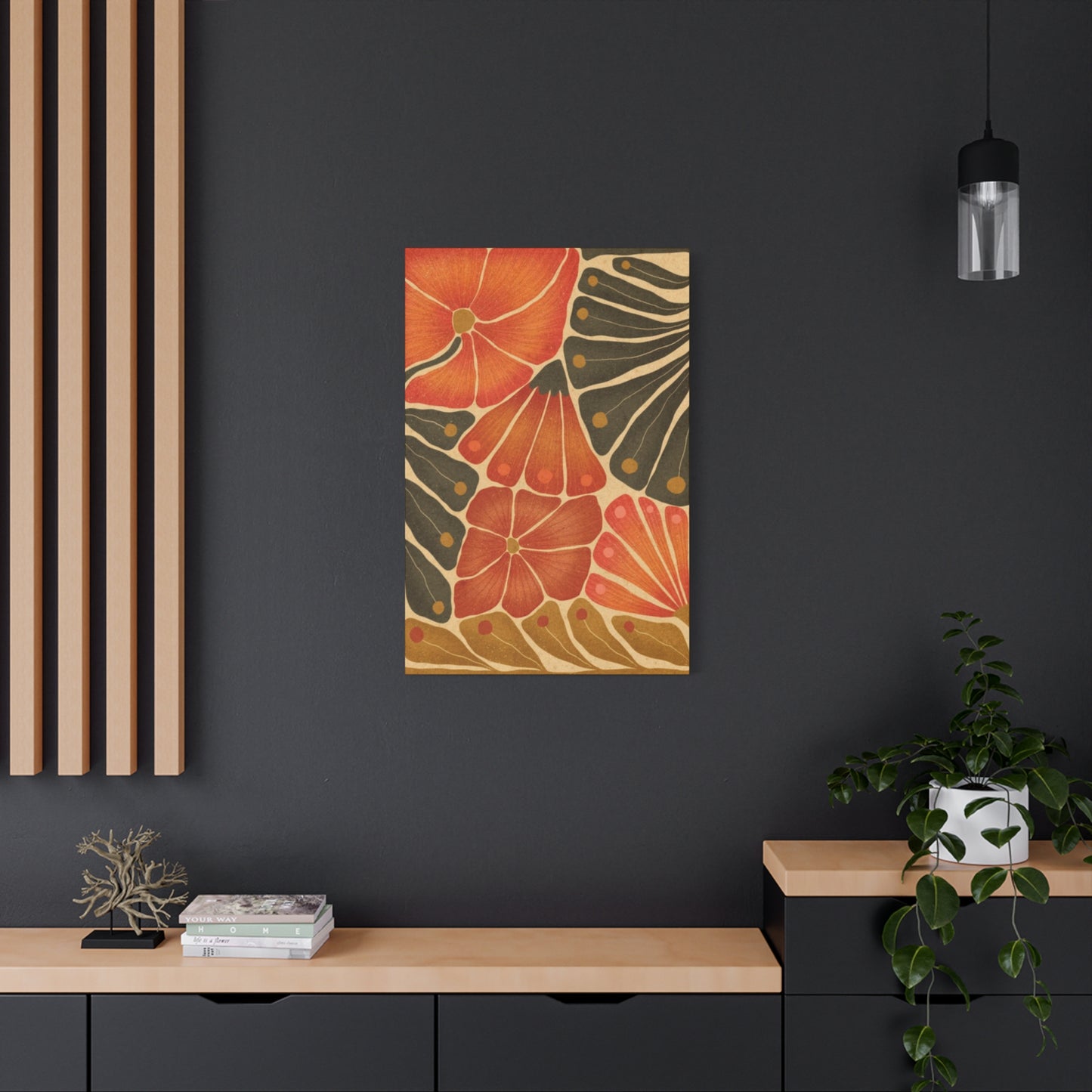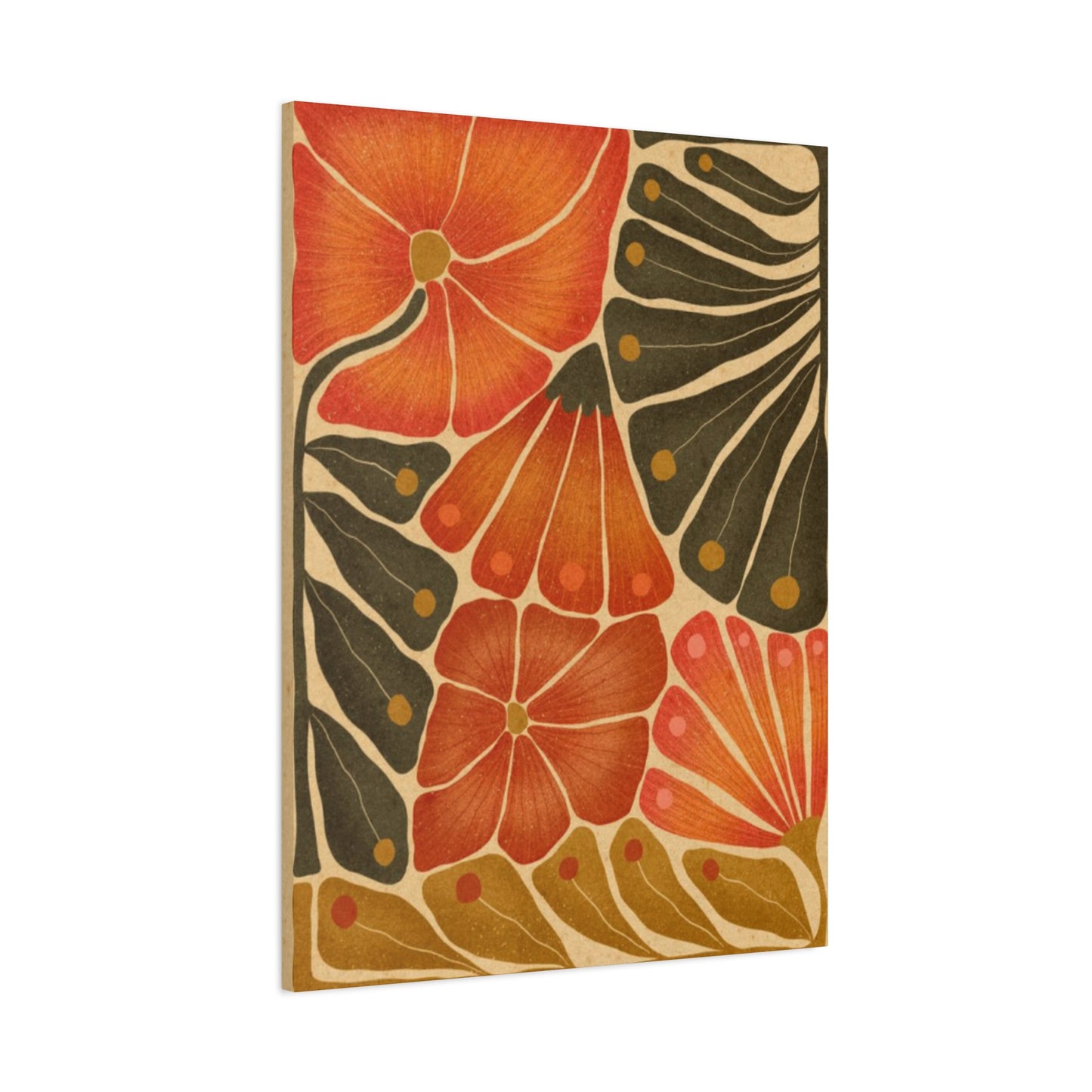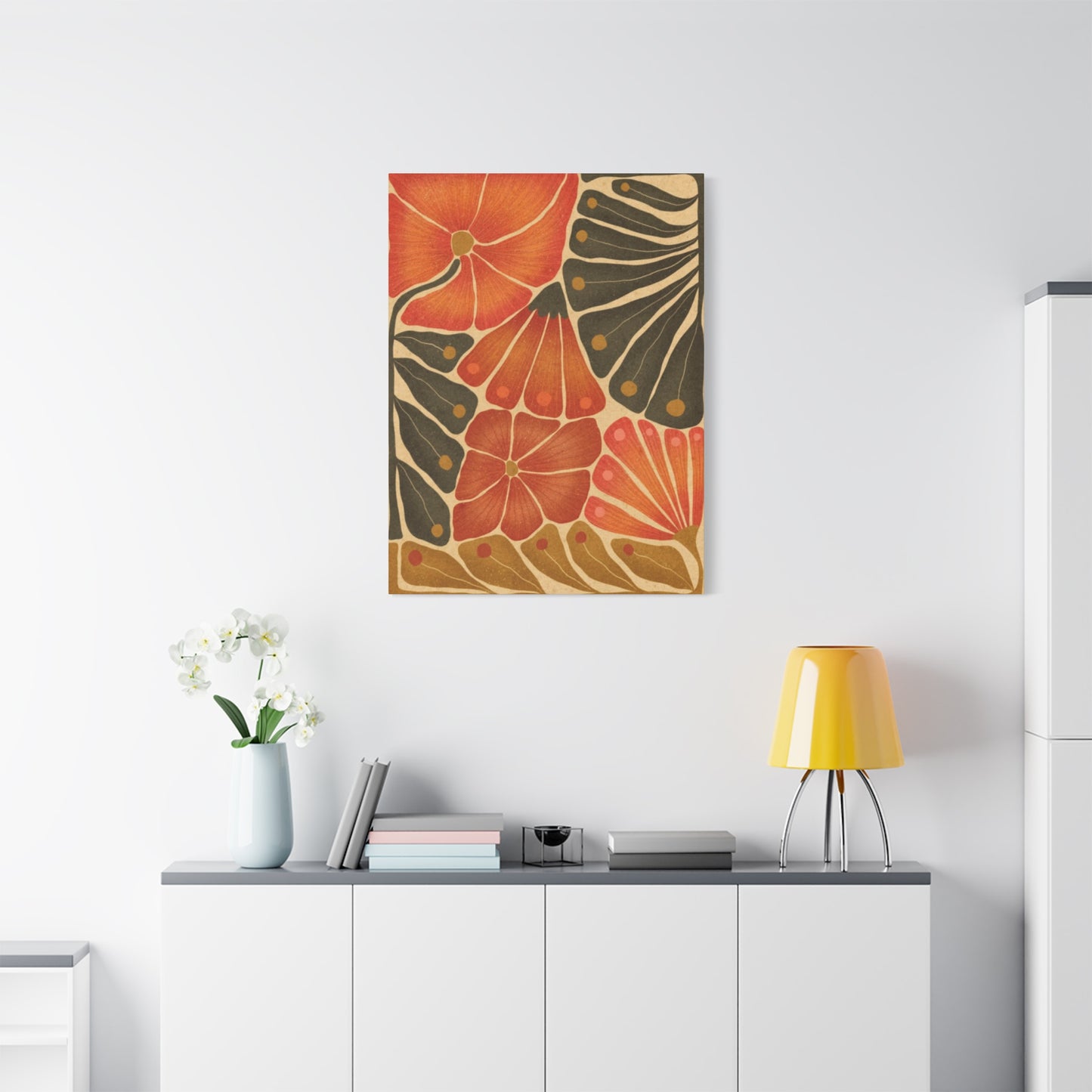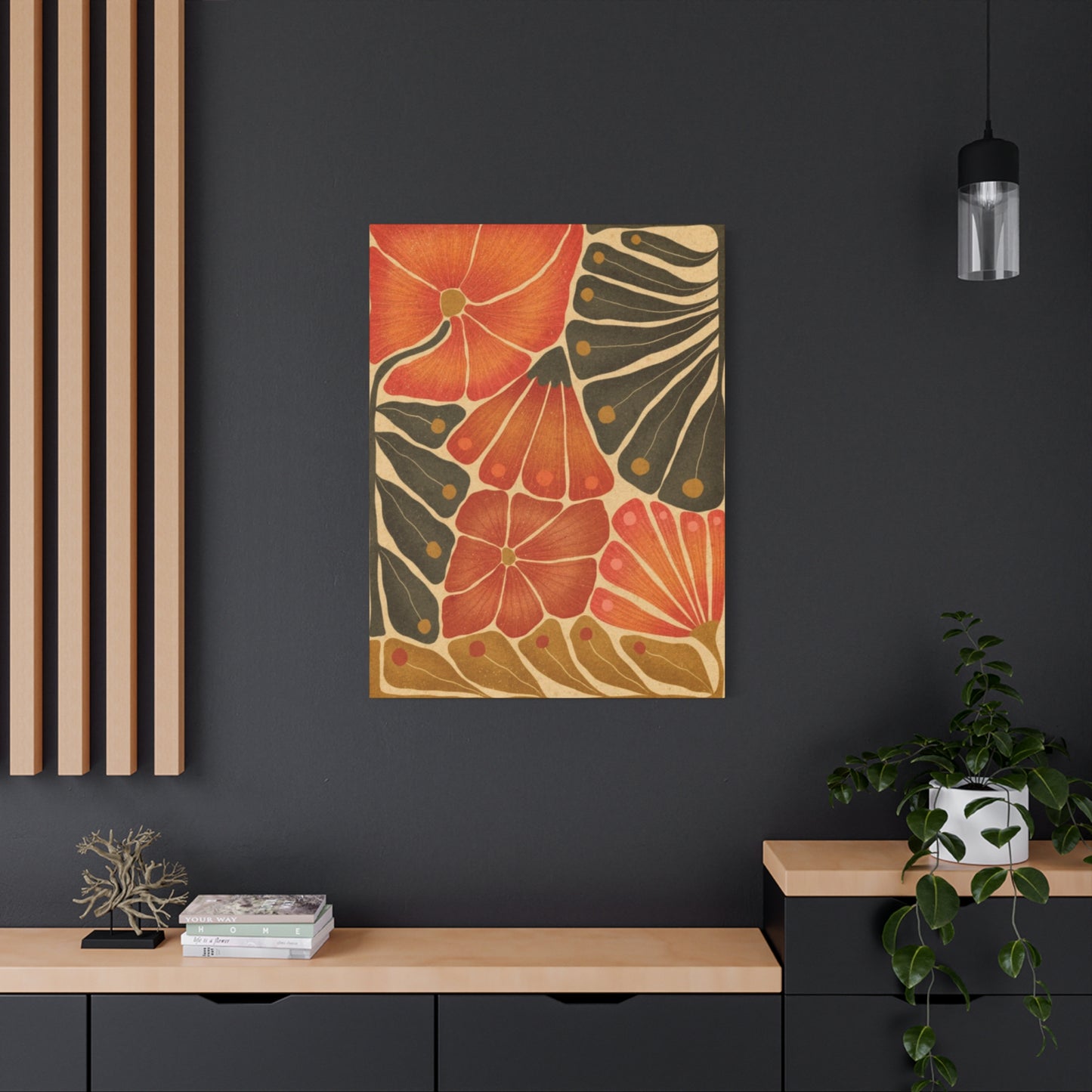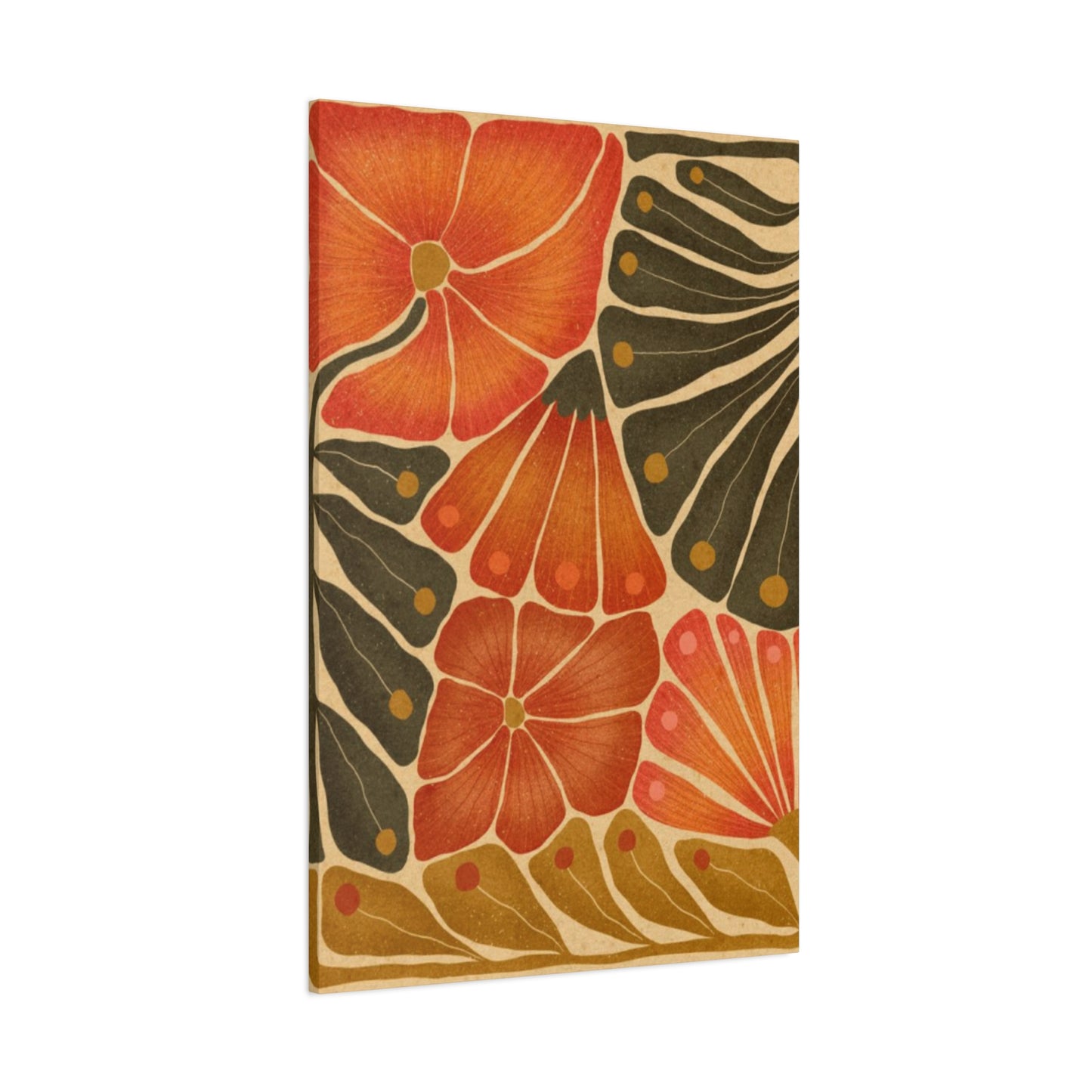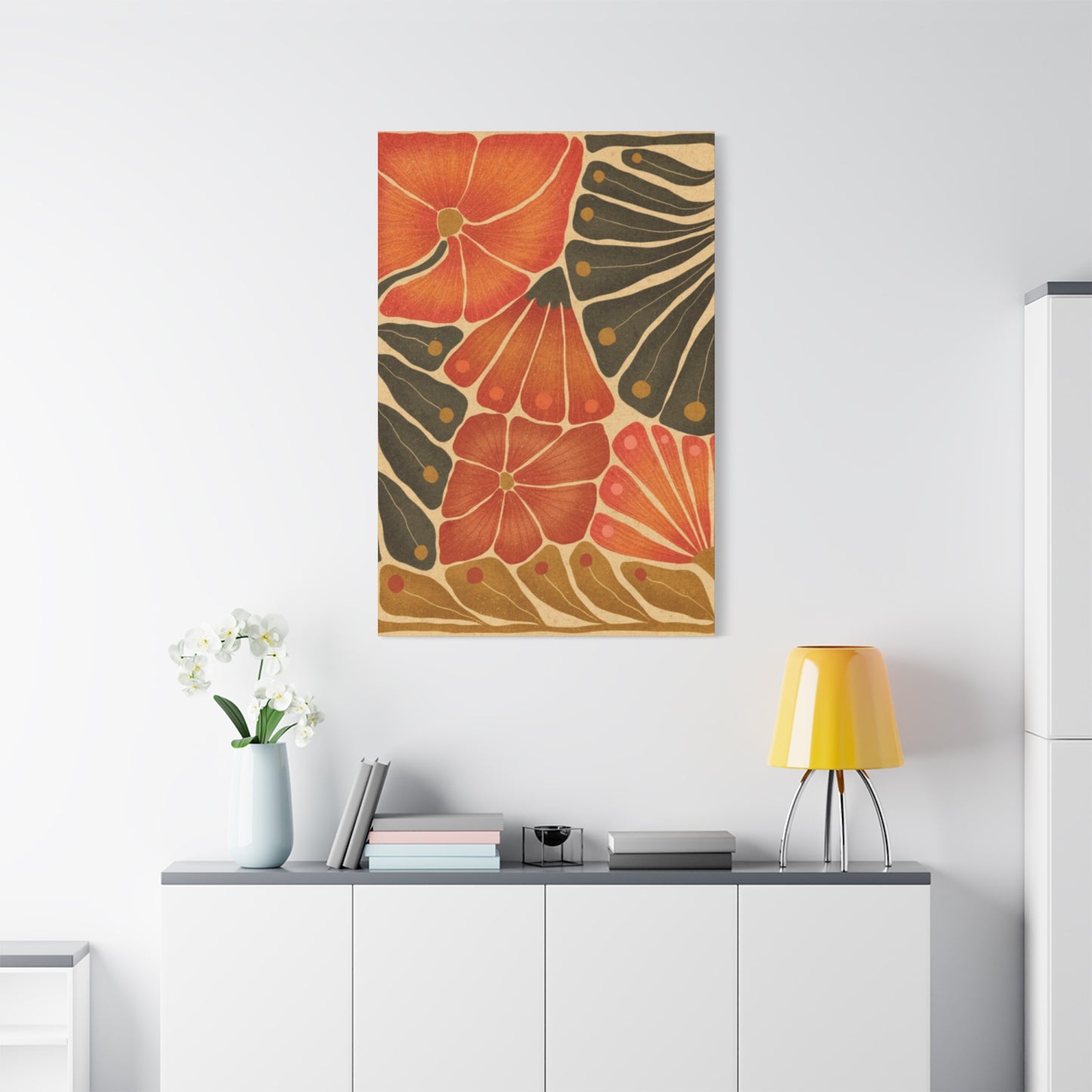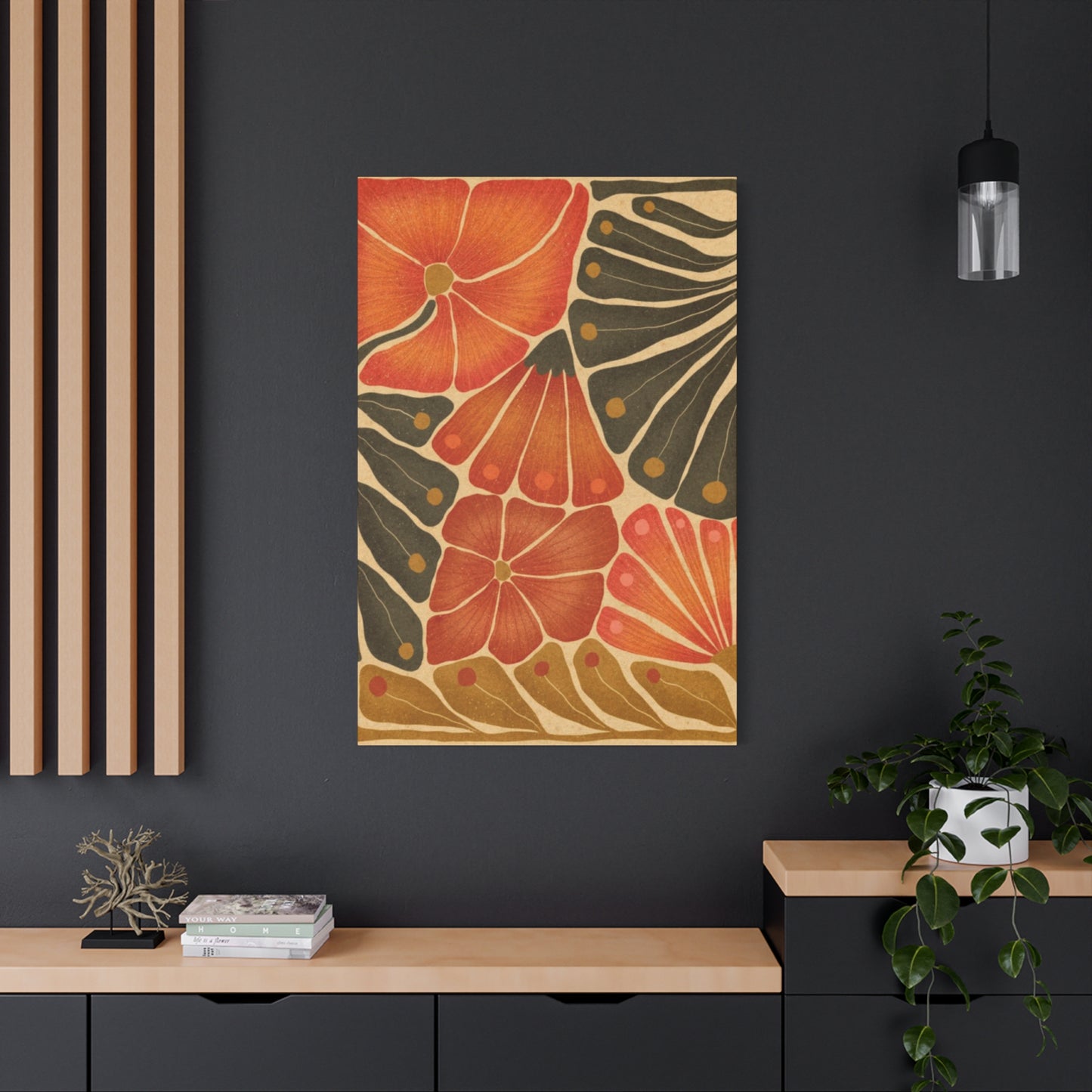Modern Flower Wall Art: Elevating Contemporary Homes with Vibrant Canvas Expressions
The world of contemporary home decoration has witnessed a remarkable renaissance in recent years, with modern floral wall art emerging as a dominant force in creating captivating and emotionally resonant living environments. This artistic movement represents a sophisticated fusion of traditional botanical themes with cutting-edge contemporary aesthetics, resulting in pieces that speak to both the heart and the mind. The evolution of floral artwork has transcended conventional boundaries, embracing bold color palettes, abstract interpretations, and innovative techniques that challenge our perception of what flower-inspired art can achieve.
Contemporary artists and designers have revolutionized the way we perceive botanical art by infusing traditional floral motifs with modern sensibilities, creating pieces that are both timeless and thoroughly contemporary. These artistic expressions serve as powerful focal points in modern homes, capable of transforming ordinary walls into extraordinary statements of personal style and artistic appreciation. The marriage of nature's inherent beauty with contemporary artistic vision has produced a genre that resonates with homeowners seeking to create environments that are both sophisticated and emotionally engaging.
The significance of modern floral wall art extends far beyond mere decoration; it represents a connection to the natural world in increasingly urbanized living environments. These pieces serve as windows to nature, bringing the vitality and energy of blooming gardens into modern homes where actual greenery might be limited. The psychological impact of floral imagery has been well-documented, with studies showing that exposure to flower-themed artwork can improve mood, reduce stress, and enhance overall well-being.
Revolutionary Approaches to Contemporary Botanical Canvas Art
The contemporary art world has embraced a revolutionary approach to botanical representation, moving away from traditional realistic depictions toward more expressive and emotionally charged interpretations. Modern artists are experimenting with various techniques, from digital manipulation to mixed media applications, creating floral wall art that challenges conventional expectations while maintaining the essential beauty and emotional resonance that makes flowers such compelling artistic subjects.
Contemporary floral canvas prints represent a significant departure from the Victorian-era botanical illustrations that once dominated this genre. Today's artists employ bold brushstrokes, unexpected color combinations, and abstract elements that transform familiar floral forms into fresh, exciting visual experiences. This evolution reflects broader changes in artistic taste and the desire for artwork that complements modern architectural styles and contemporary lifestyle preferences.
The technical aspects of modern floral wall art production have also undergone significant transformation. Advanced printing technologies, high-quality canvas materials, and innovative framing techniques have made it possible to create pieces that rival traditional paintings in terms of visual impact and longevity. These technological advances have democratized access to high-quality floral art, making it possible for homeowners to incorporate museum-quality pieces into their living environments.
Digital art creation has opened new possibilities for floral expression, allowing artists to experiment with color gradients, layering effects, and compositional elements that would be difficult or impossible to achieve through traditional painting techniques. This digital revolution has led to the creation of floral wall art that pushes the boundaries of what is possible while maintaining the emotional connection that makes flower-themed artwork so appealing to a broad audience.
Color Psychology in Modern Floral Wall Art Selection
The selection of appropriate colors in modern floral wall art represents one of the most critical aspects of creating successful decorative schemes. Color psychology plays a fundamental role in determining how these pieces will impact the emotional atmosphere of a room, with different hues evoking distinct psychological responses and contributing to the overall mood of the environment.
Warm colors such as reds, oranges, and yellows in floral wall art tend to create energizing and welcoming atmospheres, making them ideal choices for social areas like living rooms and dining rooms. These colors can stimulate conversation, increase appetite, and create a sense of warmth and hospitality that enhances the social function of these areas. The use of warm-toned floral pieces can also help to counterbalance cool architectural elements, creating more balanced and inviting environments.
Cool colors including blues, greens, and purples in modern floral wall art contribute to creating calming and restful atmospheres, making them particularly suitable for bedrooms, bathrooms, and other areas where relaxation is the primary goal. These colors have been shown to lower blood pressure, reduce anxiety, and promote better sleep quality, making them valuable tools in creating restorative living environments.
The strategic use of neutral colors in floral wall art, including various shades of gray, beige, and cream, offers versatility and longevity in decorative schemes. Neutral-toned floral pieces can serve as sophisticated backgrounds for other decorative elements while still providing the emotional benefits associated with floral imagery. These pieces are particularly valuable in minimalist or Scandinavian-inspired decorating schemes where subtle beauty is preferred over bold statements.
Contemporary artists have also embraced the use of unexpected color combinations in floral wall art, creating pieces that challenge traditional color associations while maintaining visual harmony. These bold color choices can serve as conversation starters and artistic focal points, adding personality and creativity to modern living environments.
Abstract Expressionism in Contemporary Flower Art
The influence of abstract expressionism on contemporary flower art has resulted in some of the most compelling and emotionally powerful pieces available in today's market. This artistic movement has freed floral art from the constraints of realistic representation, allowing artists to focus on the emotional essence and energetic qualities of flowers rather than their literal appearance.
Abstract floral wall art captures the movement, energy, and emotional impact of flowers through gestural brushwork, bold color applications, and compositional elements that suggest rather than literally depict botanical forms. This approach allows viewers to engage with the artwork on a more personal and emotional level, as the abstract elements leave room for individual interpretation and emotional response.
The techniques employed in abstract floral wall art often involve layering different colors and textures to create depth and visual interest. Artists may use palette knives, brushes, and other tools to create surface variations that add tactile quality to the visual experience. These techniques result in pieces that change appearance depending on lighting conditions and viewing angles, creating dynamic artworks that continue to reveal new details over time.
Contemporary abstract floral artists often draw inspiration from the natural patterns and rhythms found in flower growth and seasonal changes. These organic patterns are translated into artistic compositions that maintain a connection to natural forms while exploring purely aesthetic possibilities. The result is artwork that feels both familiar and surprising, comfortable and challenging.
The scale of abstract floral wall art plays a crucial role in its impact, with larger pieces capable of creating dramatic focal points while smaller pieces can provide subtle accents that enhance overall decorative schemes. The relationship between scale and impact is particularly important in abstract work, where the emotional effect often depends on the viewer's ability to become immersed in the artistic experience.
Canvas Technology and Modern Printing Innovations
The technological revolution in canvas production and printing has fundamentally transformed the quality and accessibility of modern floral wall art. Advanced printing technologies now make it possible to reproduce artwork with incredible fidelity, capturing subtle color gradations, texture details, and artistic nuances that were previously impossible to replicate through mass production methods.
High-resolution digital printing on premium canvas materials has eliminated many of the quality compromises that once characterized reproduced artwork. Modern printing techniques can achieve color accuracy levels that closely match original artwork, ensuring that the emotional impact and visual appeal of the original piece are preserved in the reproduction process.
The development of UV-resistant inks and protective coatings has significantly extended the lifespan of modern floral wall art, making these pieces viable long-term investments for home decoration. These technological advances protect against fading, color shift, and other forms of deterioration that once limited the longevity of canvas prints.
Canvas material innovations have also contributed to the improved quality of modern floral wall art. Contemporary canvas materials offer superior color absorption, texture consistency, and dimensional stability compared to traditional options. These improvements result in finished pieces that maintain their appearance and structural integrity over extended periods.
The precision of modern printing equipment allows for the reproduction of extremely detailed floral artwork, capturing fine details like petal textures, leaf veination, and subtle color transitions that add realism and visual interest to the finished pieces. This level of detail reproduction was previously available only in original paintings or very expensive reproduction processes.
Styling Modern Homes with Floral Canvas Prints
The integration of modern floral wall art into contemporary home decorating schemes requires careful consideration of various factors including color harmony, scale relationships, and stylistic consistency. Successful incorporation of these pieces depends on understanding how floral artwork can complement existing decorative elements while adding new dimensions of beauty and interest to living environments.
Scale considerations play a crucial role in the effective use of floral wall art in modern homes. Large-scale pieces can serve as dramatic focal points, particularly in rooms with high ceilings or expansive wall areas. These statement pieces can anchor entire decorative schemes and provide starting points for selecting complementary furnishings and accessories.
Medium-scale floral wall art offers versatility in placement options, working well above furniture pieces, in hallways, or as part of gallery wall arrangements. These pieces can provide visual interest without overwhelming other decorative elements, making them ideal for creating balanced and harmonious room compositions.
Small-scale floral prints can serve as accent pieces, adding touches of color and natural beauty to bookshelves, side tables, or bathroom walls. These pieces are particularly valuable for introducing floral elements into rooms where larger artwork might be inappropriate or overwhelming.
The relationship between floral wall art and furniture selection requires careful attention to ensure harmonious integration. Contemporary furniture pieces with clean lines and minimal ornamentation can provide excellent backdrops for bold floral artwork, creating interesting contrasts between geometric forms and organic patterns.
Color coordination between floral wall art and existing decorative elements can be achieved through various approaches, from exact color matching to complementary color relationships. The most successful decorative schemes often incorporate floral pieces that share one or two colors with existing elements while introducing new hues that expand the overall color palette.
Seasonal Adaptability in Floral Wall Art Collections
The concept of seasonal adaptability in floral wall art collections has gained popularity among homeowners who appreciate the opportunity to refresh their living environments throughout the year. This approach involves selecting pieces that can be rotated or grouped differently to reflect seasonal changes and maintain visual interest over time.
Spring-themed floral wall art typically features fresh, light colors and delicate flower varieties that suggest renewal and growth. These pieces often incorporate soft pastels, emerging buds, and young foliage that capture the optimistic energy of the season. Cherry blossoms, tulips, and daffodils are popular subjects for spring collections.
Summer floral wall art tends to embrace bold, vibrant colors and full-bloom compositions that reflect the abundant energy of the season. These pieces often feature tropical flowers, lush garden scenes, and intense color combinations that capture the vitality and warmth of summer months. Sunflowers, hibiscus, and bold garden varieties are common subjects.
Autumn floral collections focus on warm, rich colors and mature blooms that suggest harvest time and seasonal transition. These pieces often incorporate deep reds, golden yellows, and burnt oranges that complement the changing foliage outside. Chrysanthemums, marigolds, and autumn-blooming varieties provide appropriate subject matter.
Winter floral wall art may seem counterintuitive, but artists have found creative ways to represent the beauty of the dormant season through abstract interpretations, evergreen subjects, and pieces that suggest the potential for future growth. These works often feature more muted color palettes and geometric interpretations of natural forms.
The practical aspects of seasonal rotation require consideration of storage solutions and hanging systems that make changing artwork convenient and damage-free. Proper storage of rotated pieces ensures their longevity and maintains their condition for future display.
Contemporary Gallery Wall Compositions
The creation of gallery wall compositions using modern floral wall art has become increasingly popular as homeowners seek to create personalized artistic statements that reflect their individual tastes and preferences. These arrangements offer opportunities to combine multiple pieces in ways that create greater visual impact than individual pieces might achieve alone.
Successful gallery wall compositions require careful attention to relationships between individual pieces, including considerations of size, color, style, and subject matter. The most effective arrangements create visual harmony while maintaining enough variety to keep the composition interesting and engaging.
The layout of gallery wall compositions should be planned carefully before installation, with many designers recommending the creation of paper templates that can be arranged on the floor or temporarily attached to the wall to test different configurations. This planning phase helps ensure that the final arrangement achieves the desired visual balance and impact.
Color relationships within gallery wall compositions play a crucial role in their success, with effective arrangements typically featuring a unifying color palette that ties individual pieces together while allowing for variations in hue, saturation, and value. The repetition of certain colors throughout the composition creates visual cohesion.
The mixing of different artistic styles within floral gallery walls can create dynamic and interesting compositions, provided that there are sufficient unifying elements to maintain overall harmony. Contemporary abstract pieces might be combined with more realistic botanical prints, creating conversations between different artistic approaches.
Scale variations within gallery wall compositions add visual interest and prevent monotony, with larger pieces typically serving as anchor points around which smaller pieces are arranged. The relationship between positive and negative areas within the composition should be carefully balanced to avoid overcrowding.
Emotional Impact and Psychological Benefits
The emotional impact and psychological benefits of modern floral wall art extend far beyond mere aesthetic appreciation, touching on fundamental human responses to natural beauty and color that have been recognized and studied by psychologists and researchers worldwide. The presence of floral imagery in living environments has been consistently linked to improved mood, reduced stress levels, and enhanced overall well-being.
Research in environmental psychology has demonstrated that exposure to natural imagery, including floral representations, can trigger positive emotional responses and reduce symptoms of anxiety and depression. These effects appear to be particularly pronounced when the artwork features bright, cheerful colors and recognizable natural forms that create associations with positive outdoor experiences.
The biophilic design movement, which emphasizes the human connection to nature, has identified floral wall art as an important tool for creating psychologically supportive environments. In urban settings where access to natural environments may be limited, floral artwork can serve as a substitute connection to nature, providing some of the psychological benefits associated with actual exposure to natural environments.
Color therapy principles suggest that different colors in floral wall art can influence emotional states in predictable ways, with warm colors generally promoting feelings of energy and sociability, while cool colors tend to encourage relaxation and contemplation. The strategic selection of floral artwork based on desired emotional outcomes can contribute to creating more supportive living environments.
The symbolic meanings associated with different flowers and floral arrangements can also contribute to the psychological impact of floral wall art. Roses might suggest romance and love, while sunflowers could evoke feelings of happiness and optimism. These symbolic associations can enhance the emotional resonance of floral artwork for viewers who are aware of these traditional meanings.
The tactile qualities of canvas prints, including surface texture and dimensional aspects, can enhance the psychological impact of floral wall art by engaging multiple senses and creating more immersive experiences. The physical presence of canvas artwork in a room contributes to the overall sensory environment in ways that digital displays cannot replicate.
Cultural Influences in Modern Floral Art Movements
The development of modern floral wall art has been significantly influenced by various cultural movements and traditions from around the world, creating a rich tapestry of artistic approaches that reflects global perspectives on natural beauty and artistic expression. These cultural influences have contributed to the diversity and richness of contemporary floral art, offering homeowners a wide range of stylistic options.
Japanese aesthetic principles, including concepts like wabi-sabi and the appreciation of imperfection and transience, have influenced many contemporary floral artists to create pieces that capture the fleeting beauty of flowers while embracing subtle imperfections that add character and authenticity to the work. These influences result in artwork that feels more natural and less artificially perfect.
Scandinavian design principles, with their emphasis on simplicity, functionality, and connection to nature, have contributed to the development of minimalist approaches to floral wall art. These pieces often feature clean compositions, muted color palettes, and simplified forms that complement contemporary architectural styles and furnishing choices.
Mediterranean artistic traditions have influenced the use of bold colors and expressive techniques in modern floral wall art, with artists drawing inspiration from the intense light and vibrant flower varieties found in Mediterranean climates. These influences result in artwork that captures the warmth and vitality of southern European artistic traditions.
Asian artistic traditions, including Chinese brush painting and Indian miniature painting techniques, have contributed sophisticated approaches to floral representation that emphasize gesture, movement, and spiritual significance. These influences can be seen in contemporary pieces that capture the essence of flowers through economical but expressive mark-making.
Contemporary African artistic movements have contributed bold color combinations and geometric interpretations of floral forms that challenge Western artistic conventions while celebrating the diversity and vibrancy of African botanical traditions. These influences add cultural richness and visual excitement to modern floral wall art collections.
Installation and Placement Strategies
The successful installation and placement of modern floral wall art requires careful consideration of various technical and aesthetic factors that can significantly impact the final appearance and longevity of the artwork. Proper installation techniques ensure that pieces remain securely mounted while displaying to their best advantage.
Height considerations play a crucial role in the effective display of floral wall art, with standard recommendations suggesting that artwork should be hung so that the center of the piece is approximately 57 inches from the floor. However, this guideline should be adjusted based on ceiling height, furniture placement, and the specific proportions of the room.
Lighting considerations are particularly important for floral wall art, as proper illumination can enhance colors and details while poor lighting can diminish the visual impact of even the finest pieces. Natural lighting should be considered, with attention paid to how changing light conditions throughout the day will affect the appearance of the artwork.
The relationship between artwork and furniture placement requires careful attention to ensure that pieces are positioned to complement rather than compete with other room elements. Artwork should be centered over furniture pieces when possible, with appropriate clearance maintained to prevent damage from furniture movement.
Wall preparation may be necessary before installation, particularly for valuable pieces that require secure mounting systems. The wall surface should be clean, dry, and properly prepared to accept mounting hardware, with consideration given to the weight of the piece and the type of wall construction.
Professional installation may be advisable for valuable or particularly large pieces of floral wall art, as improper installation can result in damage to both the artwork and the wall surface. Professional installers have access to specialized mounting hardware and techniques that ensure secure and attractive installations.
Maintenance and Preservation Techniques
The proper maintenance and preservation of modern floral wall art are essential for protecting these investments and ensuring their continued beauty over time. Understanding appropriate care techniques can significantly extend the lifespan of canvas prints while maintaining their visual appeal and structural integrity.
Regular dusting is one of the most important maintenance tasks for floral wall art, as accumulated dust can dull colors and obscure details. Soft, dry brushes or microfiber cloths should be used for routine cleaning, with care taken to avoid pressing too firmly against the canvas surface.
Environmental considerations play a crucial role in the preservation of floral wall art, with factors like humidity, temperature, and air quality all potentially affecting the longevity of canvas prints. Maintaining stable environmental conditions helps prevent expansion and contraction cycles that can damage canvas and mounting systems.
Protection from direct sunlight is essential for preserving the colors and materials in modern floral wall art, as ultraviolet radiation can cause fading and material degradation over time. UV-filtering glazing or strategic placement away from direct sun exposure can help protect valuable pieces.
Periodic inspection of mounting systems and canvas condition helps identify potential problems before they become serious issues. Loose mounting hardware, canvas sagging, or signs of environmental damage should be addressed promptly to prevent further deterioration.
Professional conservation services may be appropriate for valuable or damaged pieces of floral wall art, as conservation specialists have access to techniques and materials that can restore artwork and prevent further damage. The cost of professional conservation should be weighed against the value and sentimental importance of the piece.
Market Trends and Investment Considerations
The market for modern floral wall art has experienced significant growth in recent years, driven by increased interest in home decoration, the accessibility of high-quality reproductions, and growing appreciation for the psychological benefits of natural imagery in living environments. Understanding current market trends can help consumers make informed purchasing decisions.
The democratization of art reproduction technology has made high-quality floral wall art more accessible to a broader range of consumers, with prices ranging from modest to luxury depending on factors like size, printing quality, and artist reputation. This accessibility has contributed to the growth of the market and increased competition among producers.
Limited edition prints have become increasingly popular in the floral wall art market, offering consumers the opportunity to own pieces with some exclusivity while remaining more affordable than original artwork. These pieces often feature certificates of authenticity and numbered editions that add to their collectible value.
The rise of online art platforms has transformed the way consumers discover and purchase floral wall art, providing access to artists and styles from around the world. These platforms have also enabled direct relationships between artists and consumers, often resulting in more affordable pricing and greater variety.
Investment potential in modern floral wall art varies significantly depending on factors like artist reputation, print quality, rarity, and market demand. While most pieces are purchased primarily for decorative purposes, some limited editions and works by established artists may appreciate in value over time.
The subscription model for art rental and rotation has emerged as an alternative to traditional art ownership, allowing consumers to enjoy a variety of floral wall art pieces while avoiding the long-term commitment and storage requirements of ownership. This model appeals particularly to consumers who enjoy frequently changing their decorative schemes.
Digital Art Revolution in Floral Expression
The digital art revolution has fundamentally transformed the creation and distribution of modern floral wall art, opening new possibilities for artistic expression while making high-quality artwork more accessible to consumers worldwide. Digital tools have enabled artists to explore techniques and effects that would be difficult or impossible to achieve through traditional media.
Digital painting techniques allow artists to create floral artwork with unprecedented control over color, texture, and composition, with the ability to make unlimited revisions and experiments without material costs. These techniques have enabled the creation of complex, layered compositions that capture the intricacy and beauty of floral subjects.
Photo manipulation and digital collage techniques have created new hybrid forms of floral wall art that combine photographic elements with painted or drawn components. These mixed-media approaches can create surreal and fantastical floral compositions that challenge traditional boundaries between photography and painting.
Vector-based illustration has enabled the creation of scalable floral artwork that can be reproduced at any size without loss of quality, making it possible to create everything from small accent pieces to large-scale wall murals from the same digital file. This scalability offers both artists and consumers greater flexibility in application.
3D rendering techniques have been applied to floral art creation, allowing artists to create three-dimensional floral compositions that can be viewed from multiple angles and lit in various ways. These techniques can create dramatic effects and unusual perspectives that add visual interest and artistic sophistication.
The integration of artificial intelligence and machine learning in art creation has begun to influence floral wall art production, with AI systems capable of generating original floral compositions based on style parameters and training data. While controversial, these technologies offer new possibilities for artistic exploration and customization.
Environmental Considerations in Art Production
The environmental impact of modern floral wall art production has become an increasingly important consideration for both artists and consumers who are conscious of sustainability issues. Understanding the environmental implications of different production methods can help guide more responsible purchasing decisions.
Traditional canvas printing often involves chemical processes and materials that can have environmental impacts, including the use of petroleum-based inks and synthetic canvas materials. However, many producers have adopted more environmentally friendly alternatives in response to consumer demand and environmental regulations.
Water-based inks and eco-friendly canvas materials have been developed as alternatives to traditional production methods, offering reduced environmental impact while maintaining quality standards. These alternatives often use renewable or recycled materials and produce fewer harmful byproducts during manufacturing.
The carbon footprint of art shipping and distribution represents another environmental consideration, particularly for artwork purchased online from distant producers. Local sourcing and carbon-neutral shipping options can help reduce the environmental impact of art purchases.
Sustainable packaging materials are increasingly being used for art shipping, with recyclable and biodegradable options replacing traditional plastic and foam packaging. Some producers have also adopted minimal packaging approaches that reduce waste while still protecting artwork during shipping.
The longevity of high-quality floral wall art represents an important environmental consideration, as durable pieces that maintain their appearance over time reduce the need for frequent replacement and the associated environmental impacts of production and disposal.
Customization and Personalization Options
The growing demand for personalized home decoration has led to increased availability of customization options in modern floral wall art, allowing consumers to create pieces that perfectly match their individual preferences, decorative schemes, and personal meaningful connections to specific flowers or colors.
Color customization services enable consumers to adjust the color palette of existing floral artwork to match specific decorative schemes or personal preferences. These services can modify hues, saturation levels, and color relationships while maintaining the artistic integrity of the original composition.
Size customization options allow consumers to have floral artwork produced in dimensions that perfectly fit specific wall areas or decorative requirements. This flexibility is particularly valuable for unusual wall sizes or when creating custom gallery wall arrangements.
Personalized floral compositions can be created based on specific flower preferences, seasonal themes, or meaningful associations. Some artists and producers offer services to create custom floral artwork featuring specific flower varieties that have personal significance to the consumer.
Text integration options allow for the addition of meaningful quotes, names, dates, or other text elements to floral wall art, creating personalized pieces that commemorate special occasions or express individual sentiments. These additions must be carefully integrated to maintain artistic balance.
Framing and mounting customization enables consumers to select specific frame styles, colors, and materials that complement both the artwork and their existing decorative elements. Professional framing can significantly enhance the presentation and perceived value of floral wall art.
Therapeutic Applications in Healthcare Settings
The therapeutic applications of modern floral wall art in healthcare settings have gained recognition as medical professionals and facility designers recognize the positive impact that natural imagery can have on patient well-being, recovery times, and overall healthcare experiences.
Hospital and clinic environments often benefit from the calming and uplifting effects of floral wall art, which can help reduce patient anxiety and create more welcoming atmospheres in settings that might otherwise feel clinical and impersonal. The presence of natural imagery can provide psychological comfort during stressful medical experiences.
Senior care facilities have found floral wall art particularly beneficial for residents with dementia and other cognitive conditions, as familiar natural imagery can trigger positive memories and provide sensory stimulation that supports cognitive function. The use of floral themes can create connections to gardening experiences and seasonal memories.
Pediatric healthcare facilities often use bright, cheerful floral wall art to create child-friendly environments that reduce fear and anxiety associated with medical procedures. The use of cartoon-like or stylized floral imagery can make medical environments feel less threatening to young patients.
Mental health facilities have incorporated floral wall art as part of therapeutic environment design, recognizing that exposure to natural imagery can support healing processes and contribute to positive therapeutic outcomes. The selection of appropriate imagery requires consideration of patient populations and therapeutic goals.
Physical therapy and rehabilitation facilities use floral wall art to create encouraging environments that support patient motivation and engagement in recovery processes. The uplifting nature of floral imagery can contribute to positive attitudes that are essential for successful rehabilitation outcomes.
Conclusion
Modern floral wall art represents far more than simple decorative elements; these pieces serve as powerful tools for transforming living environments, supporting psychological well-being, and creating meaningful connections between indoor environments and the natural world. The evolution of floral artwork from traditional botanical illustrations to contemporary artistic expressions reflects broader changes in artistic sensibility, technological capability, and cultural understanding of the relationship between art and human wellness.
The diversity of approaches available in today's market ensures that consumers can find floral wall art pieces that perfectly complement their individual aesthetic preferences, decorative schemes, and emotional needs. Whether preferring bold abstract interpretations, subtle minimalist compositions, or vibrant contemporary representations, the current market offers unprecedented choice and quality in floral artwork options.
The technological advances that have revolutionized the production and distribution of modern floral wall art have democratized access to high-quality artistic pieces while maintaining the emotional resonance and visual impact that make floral themes so universally appealing. These advances have enabled artists to explore new creative possibilities while making their work accessible to broader audiences.
The psychological and therapeutic benefits associated with floral wall art have been increasingly recognized by healthcare professionals, designers, and homeowners who understand the importance of creating supportive environments that contribute to overall well-being. The scientific evidence supporting the positive impact of natural imagery in living environments continues to grow, validating the intuitive understanding that flowers and natural beauty have positive effects on human psychology.
The cultural richness of modern floral wall art reflects global artistic traditions while embracing contemporary innovation and experimentation. This cultural diversity ensures that floral artwork remains fresh, relevant, and capable of speaking to diverse audiences with different aesthetic preferences and cultural backgrounds.
The environmental considerations associated with art production and consumption are becoming increasingly important factors in purchasing decisions, with consumers and producers working together to develop more sustainable approaches that reduce environmental impact while maintaining artistic quality and accessibility.
As we look toward the future, modern floral wall art will likely continue evolving in response to technological innovation, environmental concerns, and changing lifestyle preferences. The integration of smart home technology, sustainable production methods, and personalized artistic creation promises to create new possibilities for incorporating floral beauty into contemporary living environments.
The investment in high-quality modern floral wall art represents not only an enhancement of living environments but also a commitment to supporting artistic communities, cultural development, and the ongoing evolution of decorative arts. These pieces serve as lasting reminders of the enduring human connection to natural beauty and the power of artistic expression to enrich daily life experiences.

















